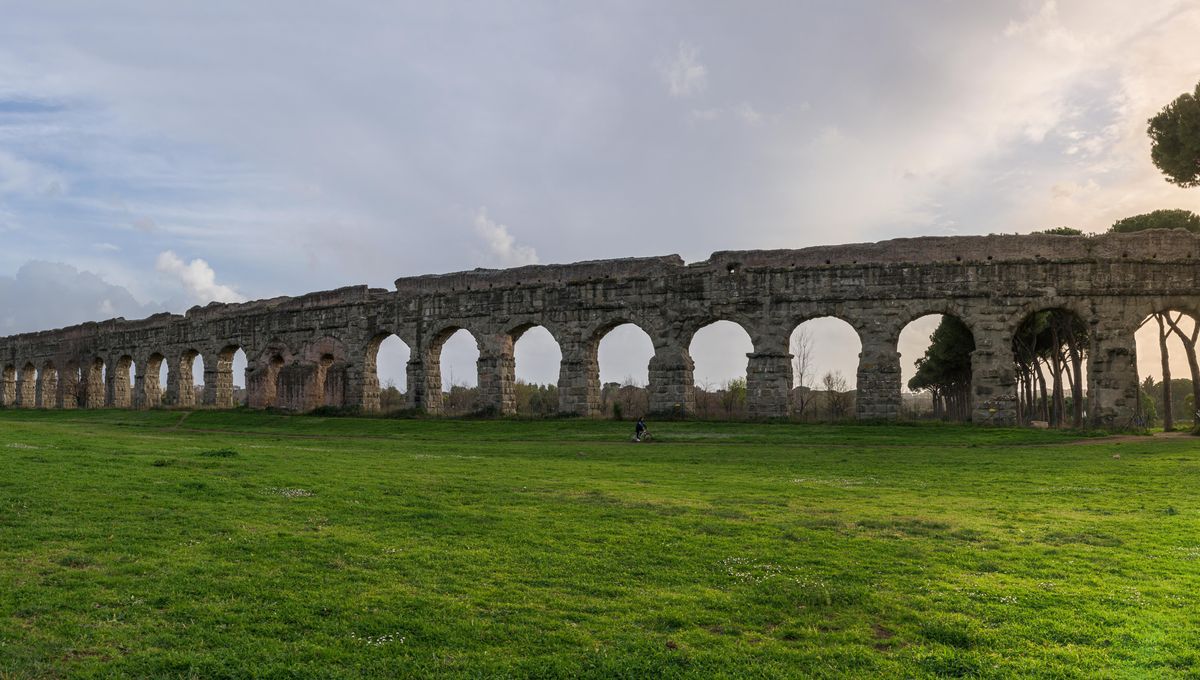
If you think of some examples of Roman inventions, the Roman aqueduct is probably among them. These large structures successfully transported water across great distances – but how did they do it, and how were they made?
What have the Romans ever done for us?
Roman aqueducts were channels designed to move fresh water from various sources to large, populated areas. Given the time in which they were created, these structures represent an incredible feat of engineering that was unlike anything developed before them. Similar technologies were previously developed by Persian, Egyptian, and Indian civilizations, but the Romans built on these practices and developed complex networks of channels that crossed various territories. Their ability to create such efficient and robust structures is evidenced by the fact that many aqueducts remain visible across Europe, Northern Africa, and the Near East, even today.
So how were these enormous projects brought to life at a time when building tools and resources were limited?
The first and most important feature of aqueducts is that they have the effects of gravity built into their designs. Roman engineers spent long periods of time considering the land and planning how to angle the channels. This may sound trivial, but it was extremely important as the speed of the moving water was vital for its quality as well as the structures’ survival. If the water moved too quickly it would wear down the stones, but if it moved too slowly it could become stagnant and therefore undrinkable. Besides being used to drink, the water conveyed to a city via an aqueduct was also used for irrigation and to supply public fountains and baths.
Tools of the trade
In order to measure the lay of the land, Romans used tools called groma, dioptra, and chorobates. These tools were essential in allowing engineers to plan grand-scale structures. The groma was used for alignment. It consisted of a pole around 5 feet (1.5 meters) in length with horizontal crosspieces mounted at right angles on a bracket. Each crosspiece had a plumb line hanging from it which helped survey straight lines and right angles.
Then there was the dioptra, which was used for leveling and measuring angles. It sat on a three-footed base and used gears and rotating plate screws to move it in horizontal or vertical directions.
Chorobates were one of the most important instruments for building aqueducts. They served as a kind of “spirit level” where a beam of wood around 20 feet (6 meters) in length was supported by legs at each end and used two plumb lines to indicate a surface’s gradient. The device’s legs had notches carved into them which corresponded to the plumb line’s position. If the lines matched on both sides, then the chorobate was flat.
Underground
When we think of an aqueduct, we probably think about the large stone frames that look like bridges that run through valleys, but that is only part of the overall structure. A large amount of an aqueduct is actually hidden below ground, where systems of pipes link these bridges to lakes or other water sources. This method was employed to protect the channels from erosion and to ensure the surrounding landscape was relatively untouched.
This was achieved through teams of workers who excavated through the ground, often working in shifts throughout the day and night. The holes were lined with clay to keep them waterproof and to avoid leaks, which allowed the water to flow from surrounding mountains and hillsides to the desired location – sometimes 50 or so miles (80 km) away. Rome alone had around 11 aqueduct systems that supplied water from sources around 57 miles (92 km) away.
Once in a city or town, the water was stored in tanks called castellum, which had secondary pipes made of lead to divert the water to other castella, and then onto even more from there. This is how water could be distributed across a city, going into fountains, bathhouses, and even private residences.
Materials that last
Even though aqueducts are ancient, some still work even today. The Aqua Virgo, built by Agrippa in 19 BCE, still provides water to Rome’s Trevi Fountain. The reason they’re able to stand and function for so long has a lot to do with the engineering that designed them but also the materials they were made from. Romans made aqueducts from a mix of stone, brick, and even volcanic cement (pozzolana).
To build these frames, these construction materials were laid into place using wooden scaffolding, similar to those used today. The process was painstaking and could take years to complete. Slaves were used to move the stone and to carry out hard labor like digging and laying.
Once the aqueduct was completed, special officials were put into place to monitor them. If anything went wrong – and they often did – teams of slaves would be deployed to undertake repairs. However, as the empire continued to expand, the number of slaves needed to support these and other projects became harder to find, which ultimately contributed to the empire’s decline.
All “explainer” articles are confirmed by fact checkers to be correct at time of publishing. Text, images, and links may be edited, removed, or added to at a later date to keep information current.
Source Link: How Did Ancient Romans Build Aqueducts?